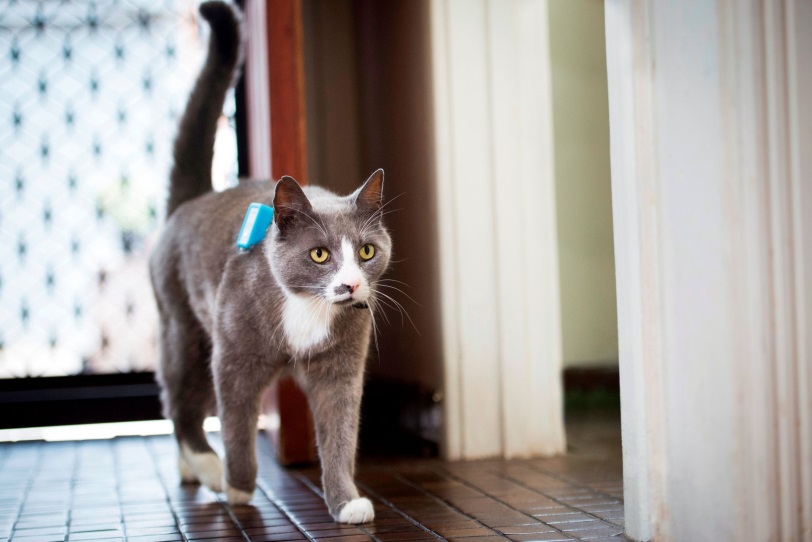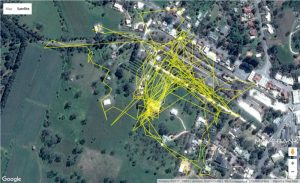
A national Cat Tracker project is coming to Tasmania, and Kingborough residents are now invited to apply to be part of this innovative scheme.
Cat Tracker is run by the University of South Australia to learn about the roaming behaviours of pet cats and aims to assist cat owners make decisions about their cat’s care and welfare. A light-weight GPS tracker is attached to the cat’s collar or harness and their movements are recorded over a 24-hour period, which is then downloaded and displayed on a map. The information helps owners to check on their cat’s safety by seeing if they are roaming near roads, identifies their favourite hiding spots, and discovers if they are visiting neighbours for extra treats.
Council is supporting the Cat Tracker project this year and is seeking participants. We are looking for cat owners to interview and for cats to track in the Kingborough municipality. Information about the project can be found on the Cat Tracker website and people can apply by completing the cat owner survey. If you are interested in being involved and wish to discuss the project in more detail, contact Kaylene Allan at Kingborough Council on 6211 8255 or email kallan@kingborough.tas.gov.au.
The South Australian project tracked over 400 cats and interviewed more than 3,000 cat owners and a few of the interesting findings include:
- Of the 428 cats that were each tracked for at least five days, the distance they roamed ranged from about 0.1 to 31 hectares, with a median of one hectare (approximately 10 average 1/4 acre residential blocks).
- Male cats and non-desexed cats roamed the furthest, and 88 per cent of the cats tracked had larger home-ranges at night.
- They compared sedentary cats (who roam less than one hectare) and wandering cats (roam more than one hectare). Wandering cats crossed more roads each day, showed more signs of being in fights and were more often seen with prey. Wandering cats were also typically younger and had less stimulation provided for them at home such as toys, scratching posts and opportunities to play with their owners.
- There were 177 cats tracked, that were described by their owners as being kept inside overnight, and it was found that 39% of them roamed over one hectare at night.
- Most respondents reported that cats roam in their neighbourhoods and 40 per cent thought that these cats were a nuisance. The major concern was fighting with, or scaring other pets.
- The study compared the personalities of indoor and outdoor cats and found their personalities to be very similar, suggesting that there is no negative impact on a cat’s personality when it is kept indoors.
- The report gives interesting advice about cats with different personalities, for example, a ‘skittish’ cat may benefit from having hiding spots at home or an ‘outgoing’ cat (curious and active) may benefit from additional toys and play time.

An example of the map tracking a cat over five days
WIN News interviewed a cat owner who is part of the Cat Tracker project, and who was surprised by where her cat had been!
